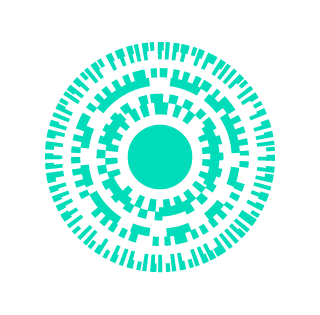Having an NFT strategy is no longer an option but a necessity to keep up with the needs of luxury customers.
From the ubiquity of online shopping to the strength of brands’ presence across mainstream social media channels, the luxury industry has been radically transformed by digitisation since the early 2000s. Now, with the emergence of Web3, the industry is embracing the challenges, demands and opportunities presented by an increasingly digitally-native consumer base. With this embrace, luxury brands are able to strengthen the relationships with their customers like never before – turning consumers into stakeholders in the process.
A remarkable stand out of this new technology is the adoption of non-fungible tokens (NFTs) by the luxury industry over the last two years. Early scepticism gave way to experimentation, leading to ambitious NFT drops that have seen major industry titles like Vogue Business, Business of Fashion and WWD extending special coverage and dedicated journalists to all things Web3 and its embrace by luxury brands.
Because NFTs are uniquely identifiable, they carry the same highly sought after level of rarity as a physical product. All NFTs are stored on the blockchain, which means that anyone can verify their legitimacy, origin and transaction history over time. More than that, however, NFTs can enjoy a life beyond the online world and their role in offering a range of utilities to enhance the customer journey, create new membership communities, and offer levels of product access and alignment that has never been possible at scale.
The rise of the global NFT market, in a relatively short space of time, reflects an understanding of the potential and value they represent to brands, communities and creatives alike. This includes enhancing client experiences and deepening brand touch points in new and engaging ways, while maintaining the levels of rarity and exclusivity that luxury clients appreciate; and demonstrating a brand’s commitment to sustainability and traceability that is data-led, action-oriented and transparent.
All of these qualities speak to the essence of luxury, namely ownership, timelessness, quality, rarity, authenticity and cultural significance, highlighting how NFTs can help a brand meet new clients and their expectations. With increasing customer expectations around authenticity and ownership, NFTs used as digital certificates tied to a physical product demonstrate that an article is genuine. Blockchain technology ensures that entries made to the digital ledger, concerning materials, craftsmanship, provenance and ownership history are correct, immutable, openly accessible and verifiable. Leveraging blockchain technology and NFTs in this way can enhance trust and transparency between brands and customers. This represents a significant strategic opportunity, given the prevalence of counterfeiting, alongside a rise in luxury reselling.
Although NFTs have been the victim of wild price-speculation and hype, a wider view of the innovative technology suggests that the strengths, utility-benefits and features of NFTs have the potential to address many of the macro challenges facing luxury maisons today. They offer the potential to accelerate progress toward strategic goals and stand apart from the competition.
New generations, new tastes
As technological innovations like blockchain and NFTs are embraced by younger generations, particularly millennials and Gen-Z, informed and aware brands will meet this new era of luxury consumers where they are – online. It is in the interest of both the brand and the individual that these interactions carry the same cultural cachet, authenticity, purpose and exclusivity of an offline experience, like browsing and purchasing from a flagship boutique. NFTs allow this.
One of the most common use cases for NFTs by brands is the opportunity to access a physical ‘twin’ product that can be worn or used offline. For example, in June of 2022, Bulgari launched their new-era high jewellery collection which included three exclusive NFTs, where the owner would own both the piece and a digital artwork inspired by the necklace. This sense of seamlessness between the digital and physical is core to the spirit of Web3. With it, a range of new touch points emerge for brands, enabled by NFTs.
Another utility that brands have used to engage a different audience is offering their customers unprecedented and unique experiences. For example with Prada’s Timecapsule NFT collection, on multiple occasions one fortunate NFT holder was chosen for a VIP experience to their Milan Fashion Shows, both the Spring/Summer and Fall/Winter, merging digital and physical assets with experience to engage true fans of the brand on all levels. Offering NFTs as standalone digital products is an important strategic consideration for luxury brands, in terms of future market reach. The rise and importance of digital fashion for use in virtual worlds such as Fortnite, Roblox and other metaverse worlds has clear and significant potential for the luxury industry. This potential will only increase a more brand experiment with virtual worlds and public participation increases.
NFTs represent a new way to appeal to the aesthetic and cultural tastes of younger generations, characterised by their keen sense of individuality and identity. With utility that spans traceability, authenticity, customer experience and digital twins, the brand has an immersive, holistic connection to the customer for as long as they own the NFT. This new dimension of loyalty, which can be harnessed from a young age, can be nurtured as that individual’s tastes mature or as their spending power grows, allowing the brand to grow with the customer as both products and utilities grow, innovate and redefine the relationship.



